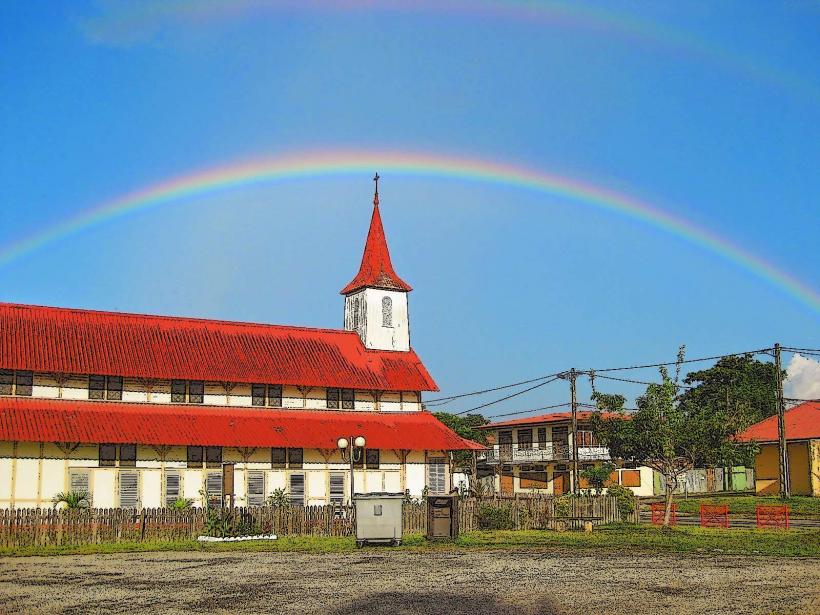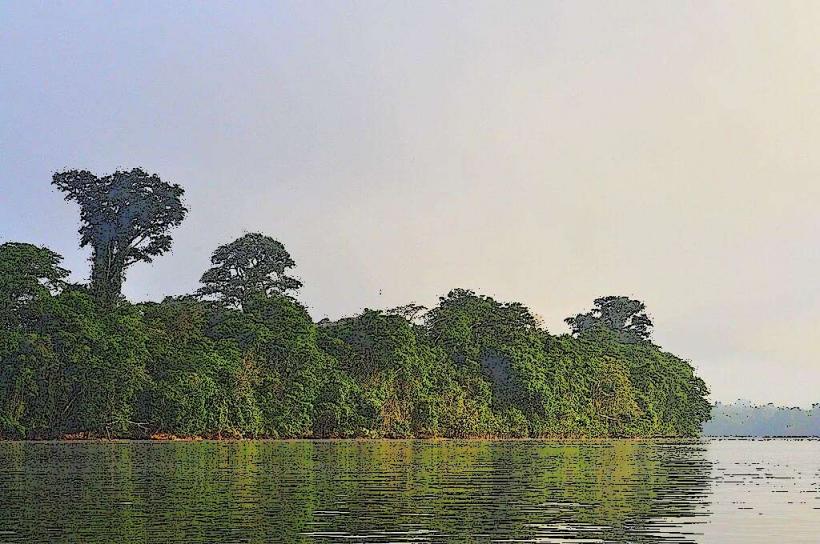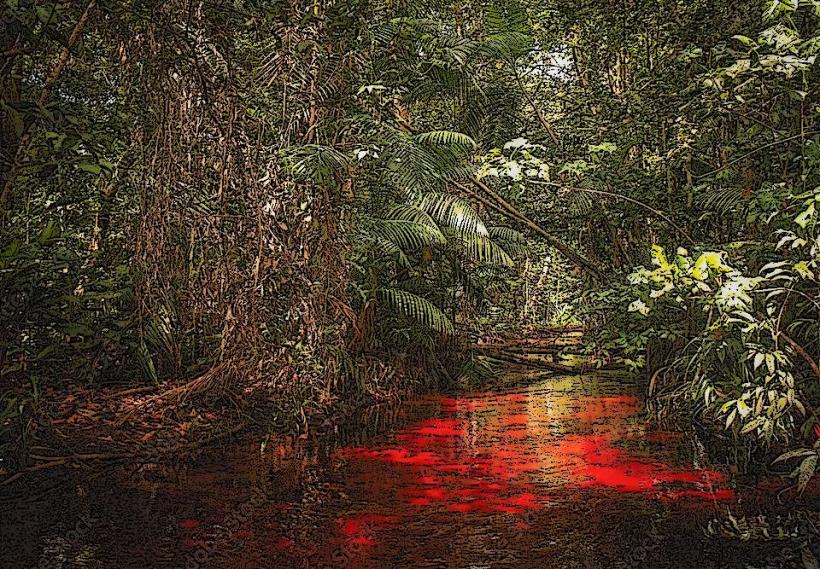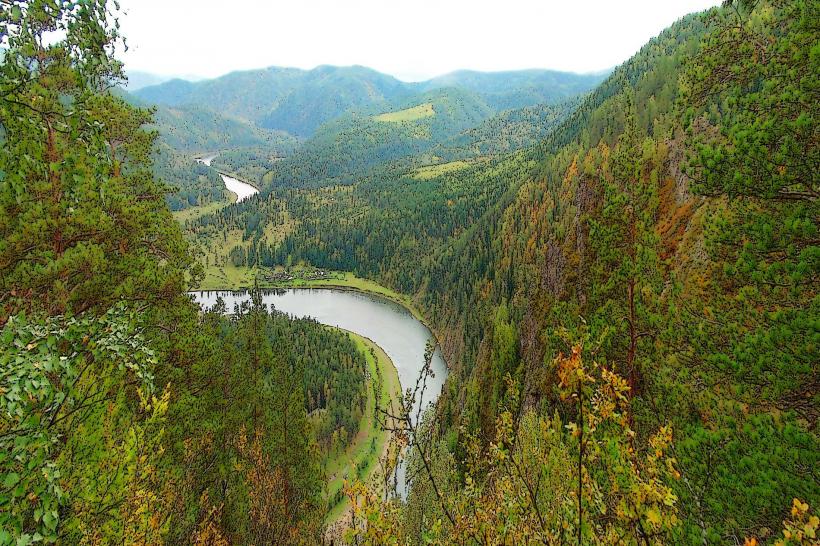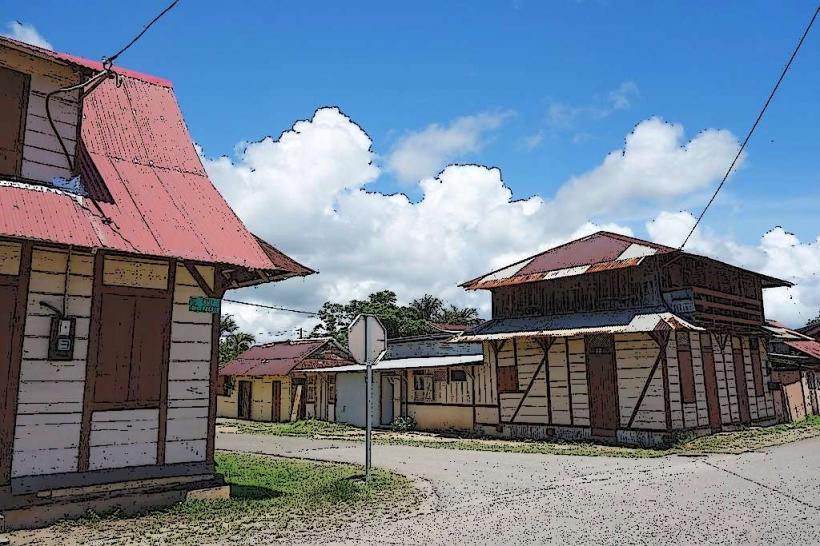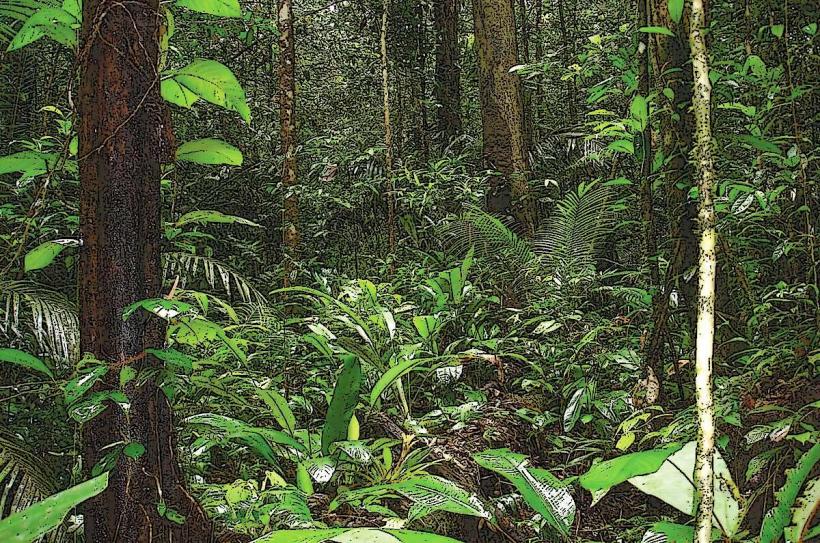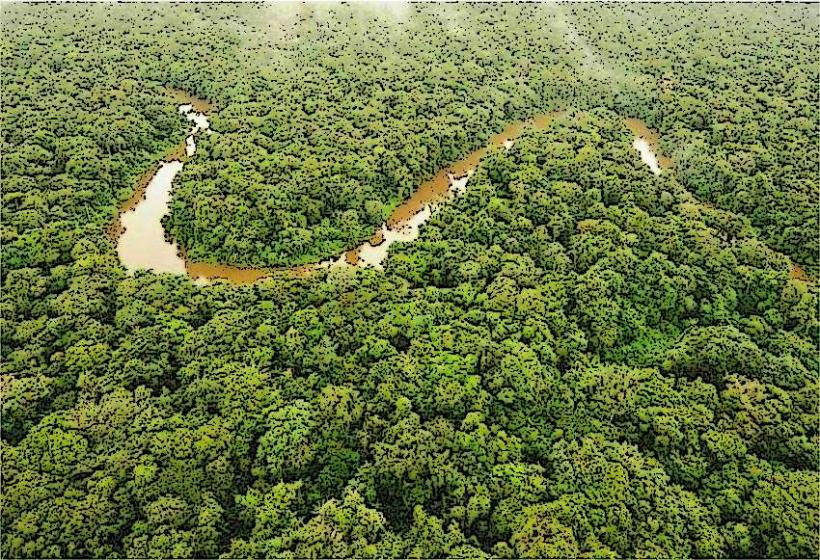Information
Landmark: Cacao ForestCity: Iracoubo
Country: French Guiana
Continent: South America
In French Guiana, the term "Cacao Forest" can refer to areas where cacao trees are grown, either in agroforestry systems or in regions that are part of the tropical rainforest ecosystems typical of the region. French Guiana, along with neighboring countries like Suriname and Guyana, is located in the northeastern part of South America, where the humid tropical climate is ideal for growing cacao. These regions also boast rich biodiversity and lush, diverse forests, some of which are utilized for cacao production.
Cacao Cultivation in French Guiana
While French Guiana is not one of the largest cacao producers globally, cacao farming is an important agricultural activity in the region. Cacao is typically grown in small-scale farms, often integrated with other crops and under the shade of larger trees, creating a type of agroforestry system that resembles a "Cacao Forest."
1. Agroforestry and Cacao Farming
In French Guiana, cacao is often grown within agroforestry systems that combine cacao trees with other crops or tree species. This approach mimics the natural forest structure and is beneficial both for the farmers and the environment:
- Shade-Grown Cacao: Cacao trees are shade-loving plants, and in these systems, they are often planted under taller trees, such as banana, coconut, or timber trees. These shade trees help protect the cacao from direct sunlight while providing additional income sources for farmers.
- Biodiversity Conservation: By growing cacao in agroforestry systems, farmers maintain a diverse ecosystem. The region’s forests provide habitat for wildlife, including birds, insects, and small mammals, and protect against soil erosion.
2. The Role of Cacao in Sustainable Agriculture
- Sustainable Farming Practices: Cacao farming in French Guiana is often based on sustainable farming practices that reduce the need for chemical fertilizers and pesticides. The natural environment helps with pest control, and cacao farming can be done in harmony with the surrounding ecosystem.
- Rainforest Conservation: Since cacao trees thrive in the lower canopy of tropical rainforests, agroforestry systems that include cacao cultivation help preserve the natural rainforest structure. These systems promote conservation by maintaining the balance of the ecosystem, preventing deforestation, and reducing the impacts of industrial farming.
Biodiversity in the Cacao Forests of Guiana
The tropical forests of French Guiana, where cacao is grown, are rich in biodiversity. The forests are part of the larger Guiana Shield, one of the world’s most biodiverse regions. These forests support a range of plant and animal species, some of which are endemic to the region. In cacao-growing areas, the following biodiversity aspects are common:
- Flora: Along with cacao, a variety of tropical plants, such as bananas, plantains, and coconut trees, are commonly grown. Additionally, native trees such as kapok and cedar provide the shade needed for cacao cultivation.
- Fauna: The forests are home to diverse wildlife, including species like jaguars, pumas, howler monkeys, toucan birds, and a rich variety of insects. These species contribute to the ecological balance of the forest and are often involved in pollination and seed dispersal.
Cacao and Local Economy
In French Guiana, cacao farming is an important part of the local economy, especially for smallholder farmers. The cacao grown in the region is often of high quality, and it plays a significant role in both local consumption and export. However, cacao production remains on a smaller scale compared to larger cacao-producing countries in West Africa or South America.
- Local Consumption: Cacao is used in local products, particularly chocolate. French Guiana, being a French overseas territory, imports French chocolate and cocoa products but also supports local artisanal chocolate-making.
- Export Potential: While cacao production is still developing, there is potential for growth in export markets, especially if sustainable and organic cacao production becomes a focus. Cacao produced in French Guiana could meet the increasing demand for ethically sourced chocolate.
Environmental Challenges
While cacao farming in French Guiana can be sustainable, several challenges still threaten the Cacao Forests:
- Illegal Logging: The forests of French Guiana are under pressure from illegal logging and other land-use changes. Logging, especially for valuable hardwood species, can threaten the integrity of ecosystems, including cacao agroforestry systems.
- Deforestation: Though cacao farming in agroforestry systems helps maintain forest cover, deforestation for other agricultural purposes, such as soy or oil palm, poses a threat to the region's biodiversity and the health of cacao forests.
- Climate Change: Changes in rainfall patterns and rising temperatures due to climate change could disrupt cacao production, as cacao trees are highly sensitive to climatic conditions.
Conclusion
The Cacao Forests in French Guiana represent a unique form of tropical agroforestry, where cacao trees are grown in harmony with the surrounding rainforest ecosystem. These forests are part of the broader Guiana Shield and contribute to the region’s rich biodiversity. Cacao farming in French Guiana offers both environmental and economic benefits, promoting sustainable agricultural practices while preserving the tropical forests. However, the region faces challenges such as deforestation, illegal logging, and climate change, which require ongoing conservation and sustainable farming efforts to protect these valuable ecosystems.

